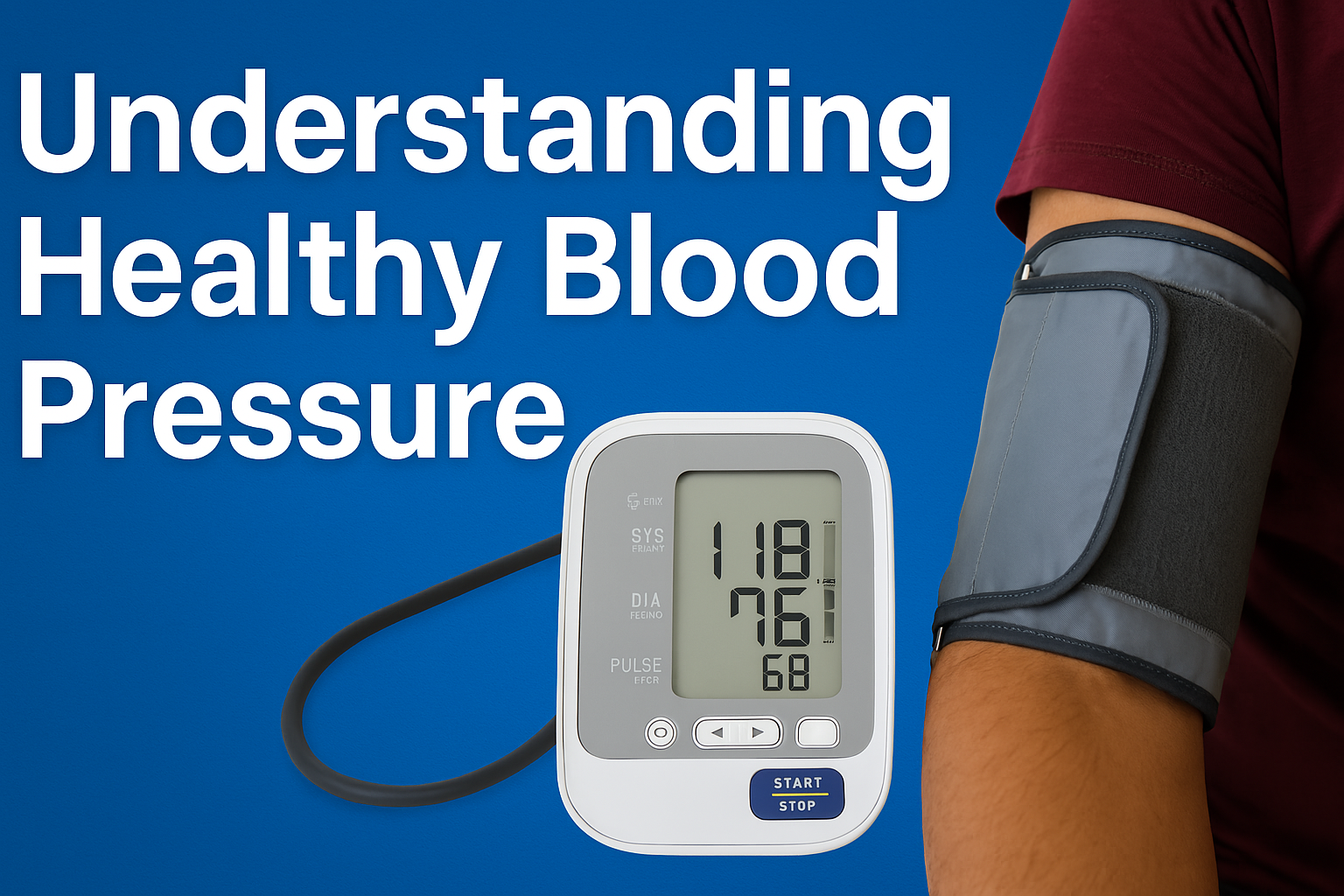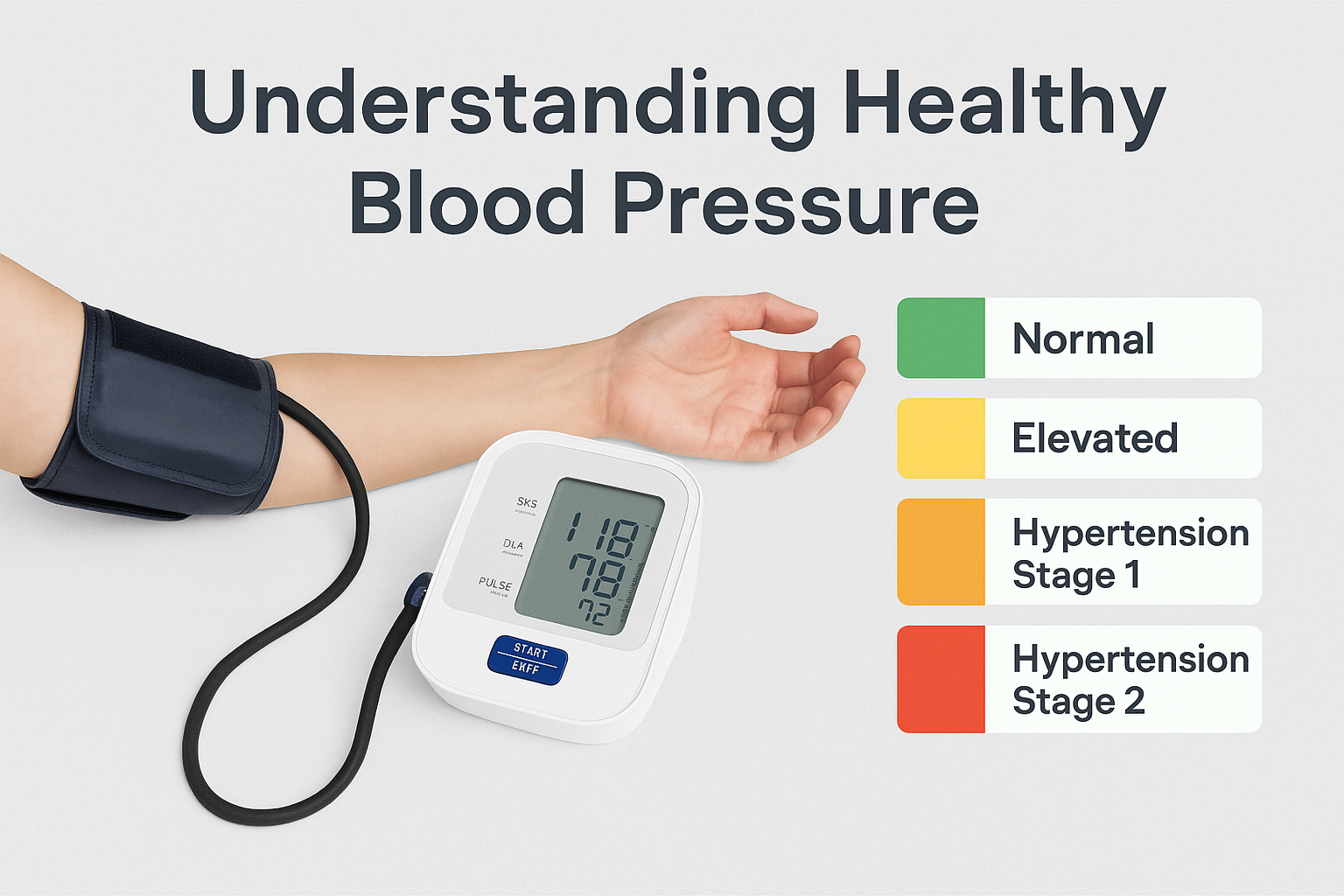Understanding Healthy Blood Pressure What You Need to Know?
February 24, 2023 | by Steve

Understanding Healthy Blood Pressure: What You Need to Know
High blood pressure, often referred to as the “silent killer,” is one of the most common health conditions affecting millions of people worldwide. Despite its prevalence, many individuals still lack a clear understanding of what constitutes a healthy blood pressure reading, even though regular blood pressure measurements are routine at health checkups. This lack of awareness can delay proper treatment, potentially leading to more serious health issues over time.
In this article, we’ll explore a recent study that sheds light on the public’s lack of knowledge about blood pressure, the importance of understanding blood pressure readings, and the latest guidelines for healthy levels. We’ll also provide actionable tips on how to take your own blood pressure at home and the lifestyle changes that can help you maintain healthy blood pressure levels.
A Surprising Lack of Knowledge on Healthy Blood Pressure
A study published in Medical Decision Making revealed that many Americans, despite feeling confident about their understanding of blood pressure, are unaware of the ideal upper limit for a healthy reading. While blood pressure measurements are routine during both routine and urgent medical visits, the study highlighted that only 36% of people could accurately identify 120/80 mm Hg as the healthy upper limit for blood pressure.

High blood pressure, or hypertension, affects around 52% of American adults, with only 25% of those with hypertension managing to control their condition effectively. This is concerning because hypertension often doesn’t show symptoms—hence, it is frequently referred to as the “silent killer.” Without routine monitoring, many people may be unaware of their condition until it causes serious complications, such as heart disease, stroke, or kidney failure.
The Importance of Accurate Knowledge About Blood Pressure
The study, led by Bruine de Bruin and her team, surveyed over 6,500 U.S. adults to assess their confidence in understanding blood pressure readings. Among those with hypertension, confidence in understanding blood pressure levels was high, but accuracy was low. In fact, of the individuals with only hypertension, 78% were confident, yet only 47% could correctly identify what constitutes a healthy reading. Even more concerning was the finding that those with both hypertension and other chronic conditions (like cardiovascular diseases or diabetes) showed high confidence (81%) but a low percentage (40%) accurately identified healthy blood pressure levels.
The researchers theorized that an overconfidence in one’s understanding of blood pressure could delay medical action, particularly for individuals who might underestimate the significance of early-stage hypertension (stage 1). This overconfidence could be detrimental to health, as it may discourage individuals from seeking prompt medical attention or making necessary lifestyle changes.
How Blood Pressure Readings Are Interpreted?
Blood pressure readings consist of two numbers: systolic and diastolic. The systolic number, the first number in a reading, measures the pressure in your arteries when your heart beats. The diastolic number, the second number, measures the pressure when your heart rests between beats. Lower readings are generally preferred, and the American Heart Association has set specific thresholds to categorize blood pressure:
-
Normal: Less than 120/80 mm Hg.
-
Elevated: Systolic between 120-129 mm Hg, and diastolic below 80 mm Hg.
-
Stage 1 Hypertension: Systolic between 130-139 mm Hg, or diastolic between 80-89 mm Hg.
-
Stage 2 Hypertension: Systolic 140 mm Hg or higher, or diastolic 90 mm Hg or higher.
-
Hypertensive Crisis: Systolic over 180 mm Hg and/or diastolic over 120 mm Hg.
It’s essential to recognize that 120/80 mm Hg is now considered the upper limit for healthy blood pressure according to the latest guidelines from the American Heart Association and the American College of Cardiology, which adjusted thresholds based on findings from the SPRINT study.
The Importance of Proper Blood Pressure Measurement
Accurate measurement of blood pressure is critical for proper diagnosis and management of hypertension. Unfortunately, blood pressure readings in clinics aren’t always accurate. Dr. Willie E. Lawrence Jr., a cardiologist, emphasized the importance of proper measurement techniques, such as waiting for five minutes after patients arrive, using an appropriately sized cuff, and ensuring that patients are seated with their legs uncrossed and their back supported. Additionally, patients should not be talking or distracted during the measurement.
Self-monitoring at home is another effective way to track blood pressure, especially for those who struggle with white coat syndrome (elevated readings due to anxiety at the doctor’s office). Dr. Lawrence recommends using a validated home blood pressure monitor, such as those listed on validatedbp.org. It’s crucial to follow the instructions for correct usage, including sitting in a quiet place and ensuring the cuff fits properly for an accurate reading.
Managing Hypertension: Lifestyle Changes and Medications
Hypertension is often manageable with lifestyle changes and, in some cases, medication. Dr. Lawrence pointed out that as people age, their arteries become more rigid, which increases the likelihood of high blood pressure. Additionally, factors like diet, exercise habits, and co-existing conditions such as diabetes contribute to the development and management of hypertension.
1. Lifestyle Changes for Managing High Blood Pressure:
-
Dietary Modifications: Reducing sodium intake, increasing potassium-rich foods, and eating a heart-healthy diet (such as the DASH diet) can significantly improve blood pressure.
-
Exercise: Regular physical activity, such as brisk walking for 30 minutes most days of the week, can help lower blood pressure.
-
Weight Management: Maintaining a healthy weight is crucial for reducing the strain on your cardiovascular system.
-
Stress Reduction: Practices like mindfulness, meditation, and yoga can help manage stress levels and lower blood pressure.
-
Avoiding Excess Alcohol and Tobacco: Cutting back on alcohol and avoiding smoking can improve overall health and reduce hypertension risk.
2. Medication for High Blood Pressure:
For many individuals, lifestyle changes alone may not be enough to manage high blood pressure. Medications like diuretics, beta-blockers, ACE inhibitors, and calcium channel blockers are commonly prescribed to help relax blood vessels, reduce fluid buildup, and control blood pressure levels. Dr. Lawrence emphasizes that medication is not a failure; rather, it’s an essential tool for individuals whose hypertension cannot be controlled through lifestyle changes alone.
Advocating for Your Health: Taking Action with Elevated Readings
Dr. Lawrence also suggests that patients should be proactive in their healthcare. If your blood pressure readings are consistently elevated, it’s important to discuss this with your healthcare provider. Understanding the thresholds for hypertension—such as 130/80 mm Hg for stage 1 and 140/90 mm Hg for stage 2—can empower you to advocate for your health and ensure you receive the necessary care.
Conclusion: Knowledge is Key to Preventing and Managing Hypertension
As the study from Medical Decision Making highlights, many people lack a clear understanding of what constitutes a healthy blood pressure reading. This lack of awareness can have serious consequences, as individuals may not seek the necessary treatment for early-stage hypertension or may be overconfident about managing their condition. Knowing your blood pressure readings and understanding the thresholds for healthy levels is essential for preventing complications associated with hypertension.
By staying informed about the signs of hypertension, taking your blood pressure regularly, and making necessary lifestyle changes or using medications as prescribed, you can take control of your cardiovascular health. Advocacy for proper measurement techniques and early intervention is key to maintaining optimal blood pressure and preventing long-term health problems.
The 6 Best Blood Pressure Monitors of 2023, Tested and Reviewed
The Five Common Symptoms of Flu: Understand Influenza
RELATED POSTS
View all


